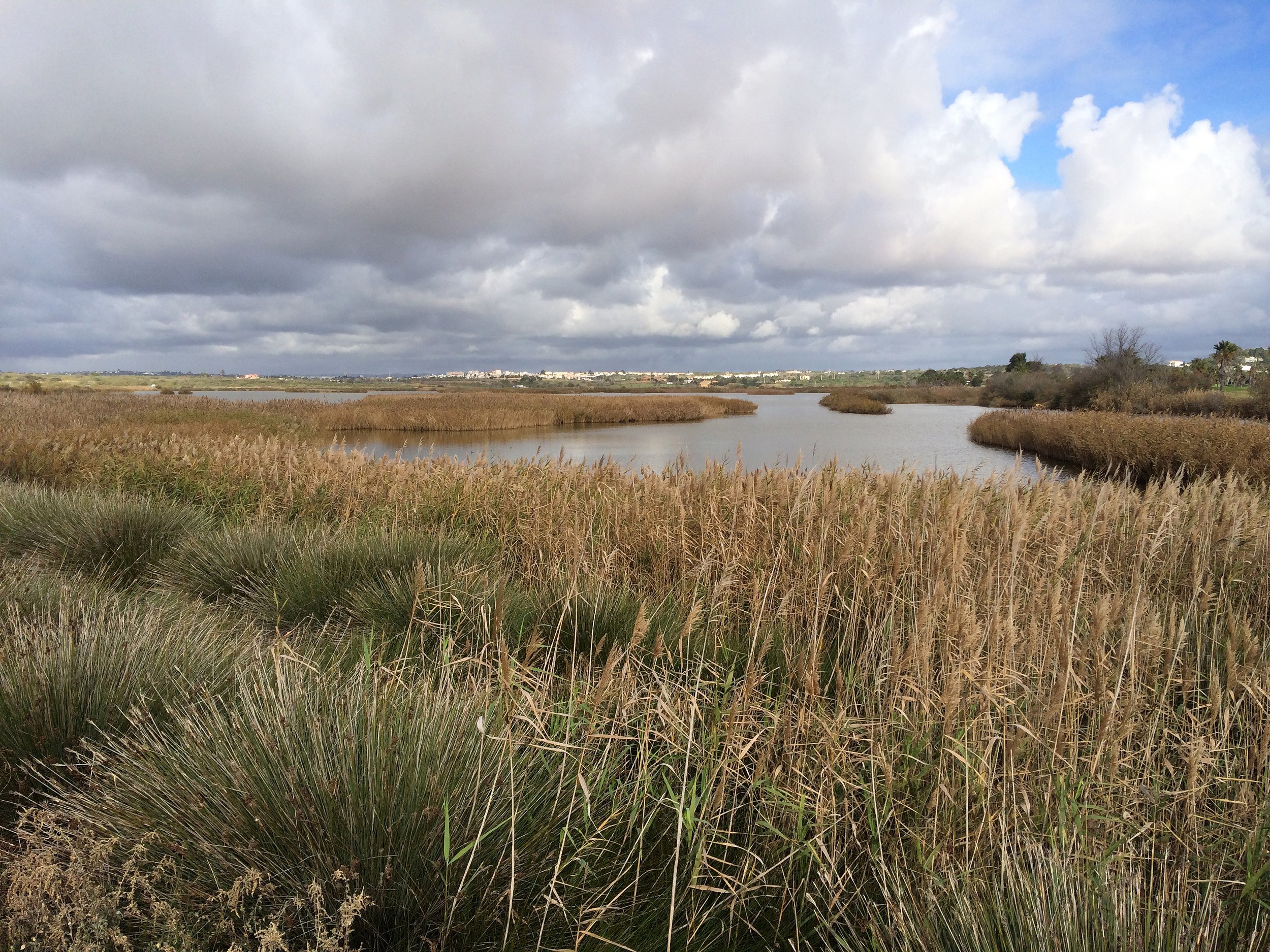The influence of water level on the presence of birds in Salgados Lagoon
Lagoa dos Salgados
This wetland is one of the Algarve's most special places for birds. However, it still lacks legal protection and effective management, something that has been demanded by various regional and national organizations for several years, including ourselves. As a way of contributing to a better understanding of the birdlife that occurs there and the effects of disturbance and lack of habitat management, we have been carrying out regular counts and from a simple analysis of the data collected (without any in-depth treatment), there is some interesting information to share.
Since September 2023 we have carried out 17 bird censuses there. During these field trips, we counted all the birds present, identified their species and took note of the water level in the lagoon using a gauge. The results show a variable presence of birds throughout the year, as expected, with peaks in abundance in winter and species during migration. The months of December 2023 and January 2024 recorded the highest numbers, over 1,000 individuals, and April - May 2024 the lowest, just over 150.
In addition to human disturbance affecting the presence of birds at this site, another relevant factor in their presence is the influence of the water level. Preliminary data seems to show a somewhat inverse relationship between these two aspects. Very high water levels (above 4.15 metres, roughly) were accompanied by a lower presence of birds. Lower levels, between 3 and 4 metres, coincided with greater bird abundance. However, more data will be needed to establish a better relationship between these aspects. However, a direct consequence of the high water level during the nesting season is the lack of good conditions for some species to build their nests and reproduce there (e.g. Avocet or Black-winged Stilt).
Among the most abundant species, we highlight several Anatidae in winter, such as the Teal (Anas crecca) and the Pintail (Anas acuta). During the nesting period, special mention should be made of the confirmation of 2 pairs of Purple Heron (Ardea purpurea) and numerous pairs of Pochard (Aythya ferina).
We'll bring you more information soon!

